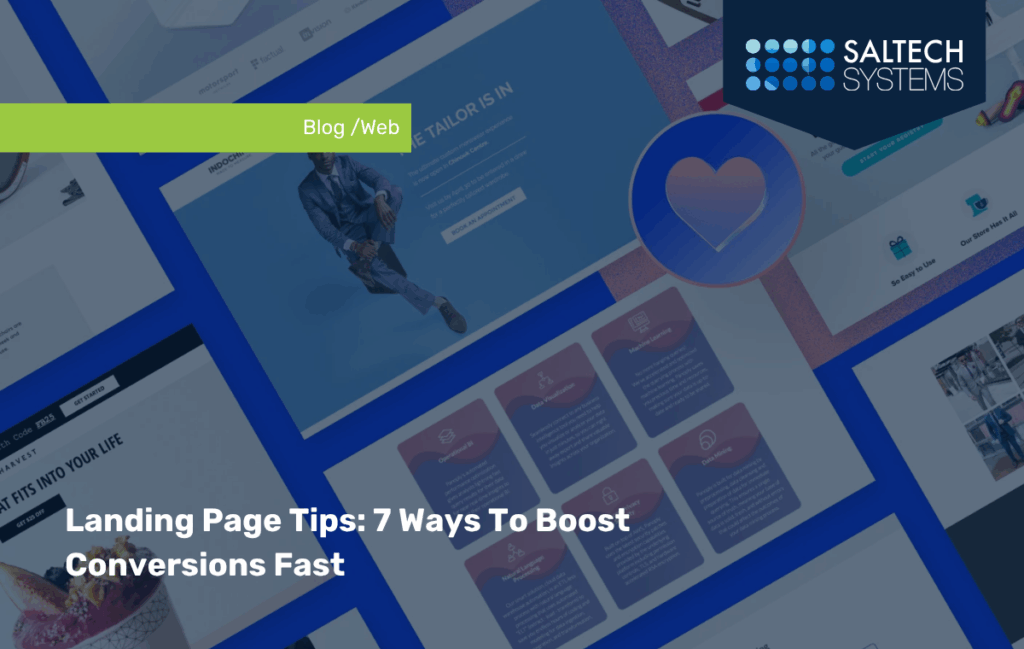When it comes to turning visitors into customers, your strategy needs to be more than just a homepage-it needs a focused, purpose-built landing page. Unlike general website pages that serve multiple functions, a landing page is designed with a single goal: to encourage action. Now, whether that’s signing up for a newsletter, booking a consultation, or downloading a guide, landing pages are built to convert.
So, what makes these work? In this blog, we will explore what a landing page is, how it functions in digital marketing, and why businesses shouldn’t overlook it’s value. You’ll learn how to leverage them to boost performance and see real-world benefits from your online efforts.
DEFINITION
A landing page is a standalone web page created specifically for marketing or advertising campaigns. It’s where a user “lands” after clicking on a paid ad, email ,link, or a promotional CTA (call to action). Unlike a homepage-which often offers broad navigation and general brand information- it has a singular focus.
That focus is tailored to drive conversions. Every element on a landing page, from the headline, to the button text, is strategically placed to guide the visitor toward one desired action.
HOW THEY WORK
The purpose of these is to minimize distractions and maximize results. Here’s how the typical process works:
- Attract Visitors through a targeted ad, social media post, or email.
- Drive them to a landing page that matches the intent of the original message.
- Present a Clear Offer such as a free trial, download, or a service quote.
- Encourage Action with a persuasive CTA.
- Capture Data via forms ( if lead generation is the goal).
This process is streamlined and effective. Research from Hubspot shows that businesses with 10-5 pages can generate 55% more leads compared to those with fewer than 10.
ELEMENTS
An optimized landing page should include the following key elements:
- Headline that clearly states the offer or value.
- Support copy that explains the benefits.
- Visuals or media that enhance the messages without distracting from it.
- Form or CTA button that’s easy to find an intuitive to use.
- Trust signals like reviews, testimonials, or guarantees.
These components work together to build trust and make it easy for users to take action. For example; Saltech Systems builds high-converting pages that aligns with user behavior and businesses objectives. Learn more on our Website Design Services page.
TYPES
There are a few different types of landing pages. Here’s a few common types, each tailored for a different goal:
- Lead Generation: Used to capture contact information through a form.
- Click Through: Encourages visitors to click through to a product or service page to learn more or to complete a purchase.
- Event: Focuses on event registration, whether virtual or in-person.
- Sales: Often long-form and rich with persuasive content designed to close a deal.
By understanding your objective, you can design the right type of page that performs with precision.
WHY THESE MATTER FOR MARKETING SUCCESS
A landing page removes friction. Instead of sending potential customers to a homepages filled with options, it directs them to one action- resulting in higher engagement and conversion rates.
Using a dedicated page improves the quality score of Google Ads campaigns, reduces bounce rates, and makes A/B testing more effective. In fact, platforms like Unbounce and Instapage are built entirely around helping marketers create pages that convert better.
If you’re already investing in Google Ads campaigns, a landing page ensures that you’re getting the most out of every click.
SEO & LANDING PAGES: CAN THEY COEXIST?
While these are typically conversion-focused, they can still be SEO-friendly when done correctly. Incorporate relevant keywords, optimizing meta tags, and ensuring fast page speeds, all contribute to better rankings.
Additionally, building landing pages that are accessible, mobile responsive, and well-structured, can contribute to a better overall user experience. At Saltech Systems, accessibility and SEO are key priorities in every web development project to ensure performance, usability, and visibility.
BEST PRACTICES FOR BUILDING A HIGH CONVERTING LANDING PAGE
To ensure your page achieves its goal, follow these these practices.
- Match your page context with the ad or CTA that brought the user there.
- Keep the form short- only ask for information you truly need.
- Use directional cues like arrows, images, or placement to guide attention.
- A/B test headlines, button colors, and layouts to optimize performance.
- Make your page mobile first to capture users across all devices.
If you’re not sure where to begin, consider a custom solution through our Marketing Services tailored to your campaign.
FINAL THOUGHTS
A landing page is more than just a marketing tool- it’s the key to unlocking higher conversions, better engagement, and improved ROI. When used effectively, it acts as the bridge between user interest and action. Whether you want more leads, better ad results, or a streamlined customer journey, these pages will get you there.
If you are ready to create a landing page that performs, contect Saltech Systems’ team today. Our experts will help you strategize, design and implement landing pages that align with your business’s goals, and drive real results.
